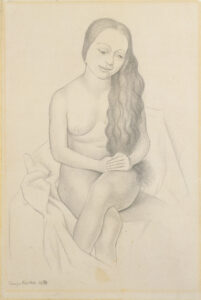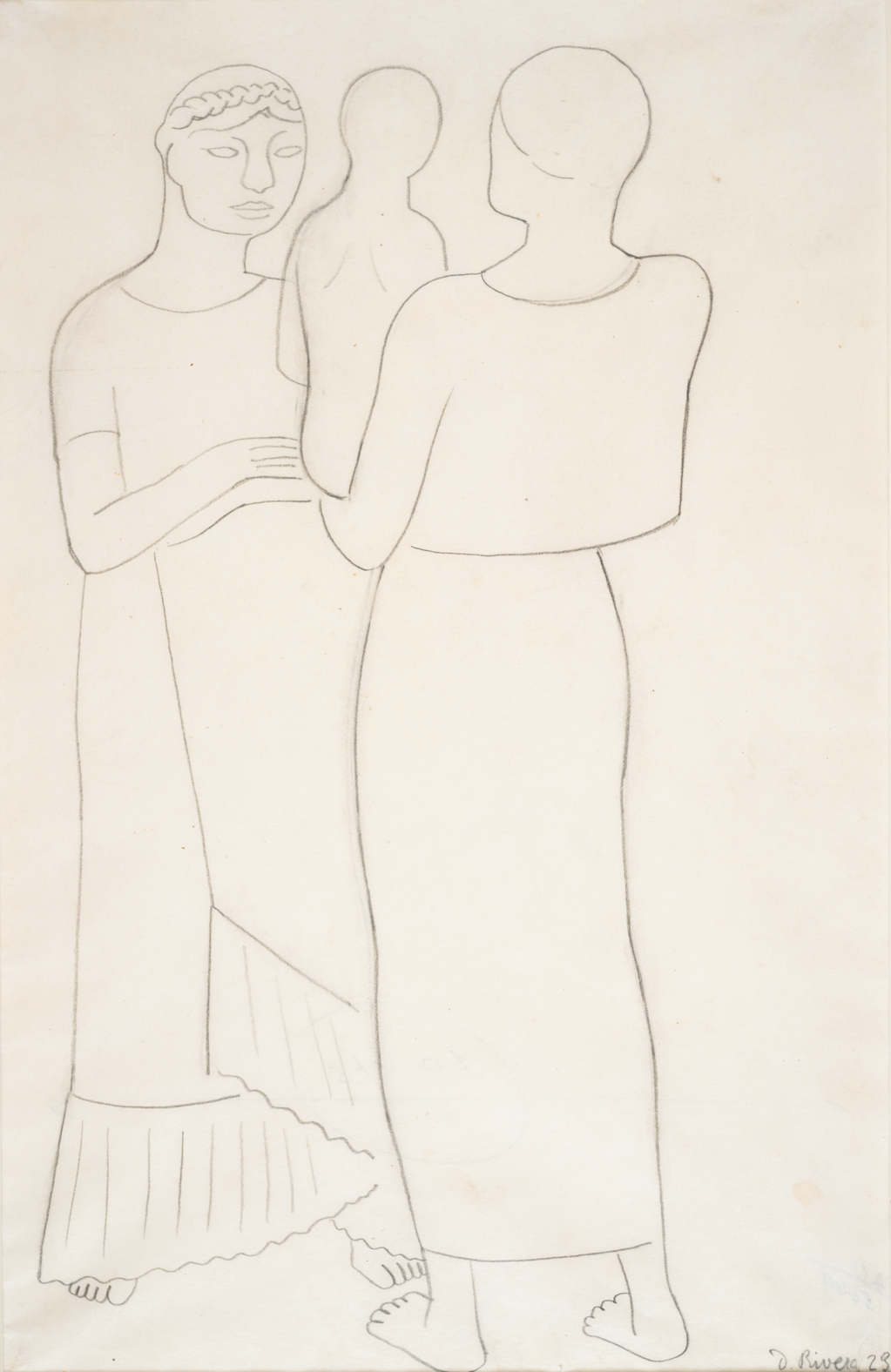Diego Rivera
Mexican
1886, Guanajuato, Mexico
1957, Mexico City, Mexico
During the 1920s Diego Rivera helped establish a nationalist painting style in Mexico that reflected the nation's indigenous forms and symbols as well as its renewed political vitality.
Rivera received his formal training in Mexico City, where the seeds of his populist philosophy were planted. In 1907, he was awarded a scholarship to travel and study in Spain, France, and Italy. He returned to his home country some fourteen years later, and quickly became a leader of the muralism movement that flourished after the end of the Mexican Revolution.
Like his colleagues, Rivera painted allegorical depictions of traditional indigenous culture and the dignity of the working class, as well as utopian visions of the future under socialism. Between 1930 and 1940, he painted murals in San Francisco, New York, and Detroit that focused on industry and social progress through technology.
Rivera, a notorious womanizer, was married three times — most famously to the painter Frida Kahlo.
Works in the Collection
-
Diego RiveraCabeza de Ranchero, Silao, Guanajuato (Head of a Rancher, Silao, Guanajuato)
-
Diego RiveraUntitled (Mexican Digging)
-
 Diego RiveraUntitled
Diego RiveraUntitled -
Diego RiveraLa Mujer Ebria (Drunken Woman)
-
Diego RiveraUntitled (Farm Workmen)
-
 Diego RiveraUntitled (Woman Walking)
Diego RiveraUntitled (Woman Walking) -
Diego RiveraPaisaje de Tlanepantia (Landscape of Tlanepantia) [formerly Tehuantepec]
-
 Diego RiveraUntitled
Diego RiveraUntitled -
Diego RiveraUntitled (Head of a Man)
-
Diego RiveraHombre surtado durmiendo (Seated Man Asleep)
-
Diego RiveraUntitled (Mother and Child)
-
 Diego RiveraUntitled (Three Figures)
Diego RiveraUntitled (Three Figures) -
 Diego RiveraVendedora de flores descansando (Flower Seller at Rest)
Diego RiveraVendedora de flores descansando (Flower Seller at Rest) -
 Diego RiveraUntitled (Soldier and Laborer Working in a Maguey Field)
Diego RiveraUntitled (Soldier and Laborer Working in a Maguey Field) -
 Diego RiveraJardin Tropical (Tropical Garden)
Diego RiveraJardin Tropical (Tropical Garden) -
 Diego RiveraUntitled (Gold Dredge)
Diego RiveraUntitled (Gold Dredge) -
 Diego RiveraMan of Tehuantepec
Diego RiveraMan of Tehuantepec -
 Diego RiveraEl Puesto de Comida (The Food Stall)
Diego RiveraEl Puesto de Comida (The Food Stall) -
 Diego RiveraMujeres conversando, Tehuantepec (Women Talking, Tehuantepec)
Diego RiveraMujeres conversando, Tehuantepec (Women Talking, Tehuantepec) -
Diego RiveraMujer mexicana con canasta (Mexican Woman with Basket)
Please note that artwork locations are subject to change, and not all works are on view at all times.
Only a portion of SFMOMA's collection is currently online, and the information presented here is subject to revision. Please contact us at collections@sfmoma.org to verify collection holdings and artwork information. If you are interested in receiving a high resolution image of an artwork for educational, scholarly, or publication purposes, please contact us at copyright@sfmoma.org.
This resource is for educational use and its contents may not be reproduced without permission. Please review our Terms of Use for more information.